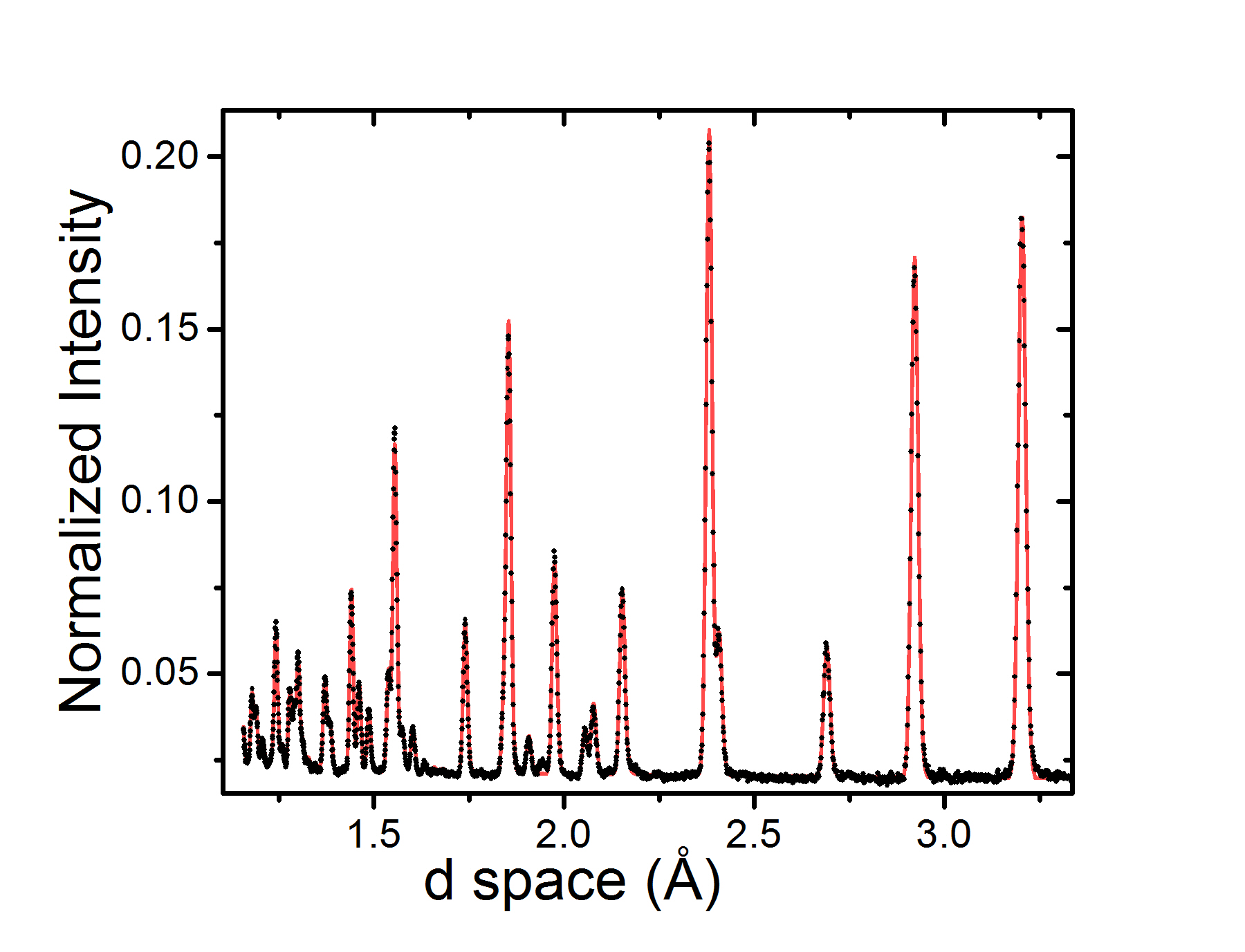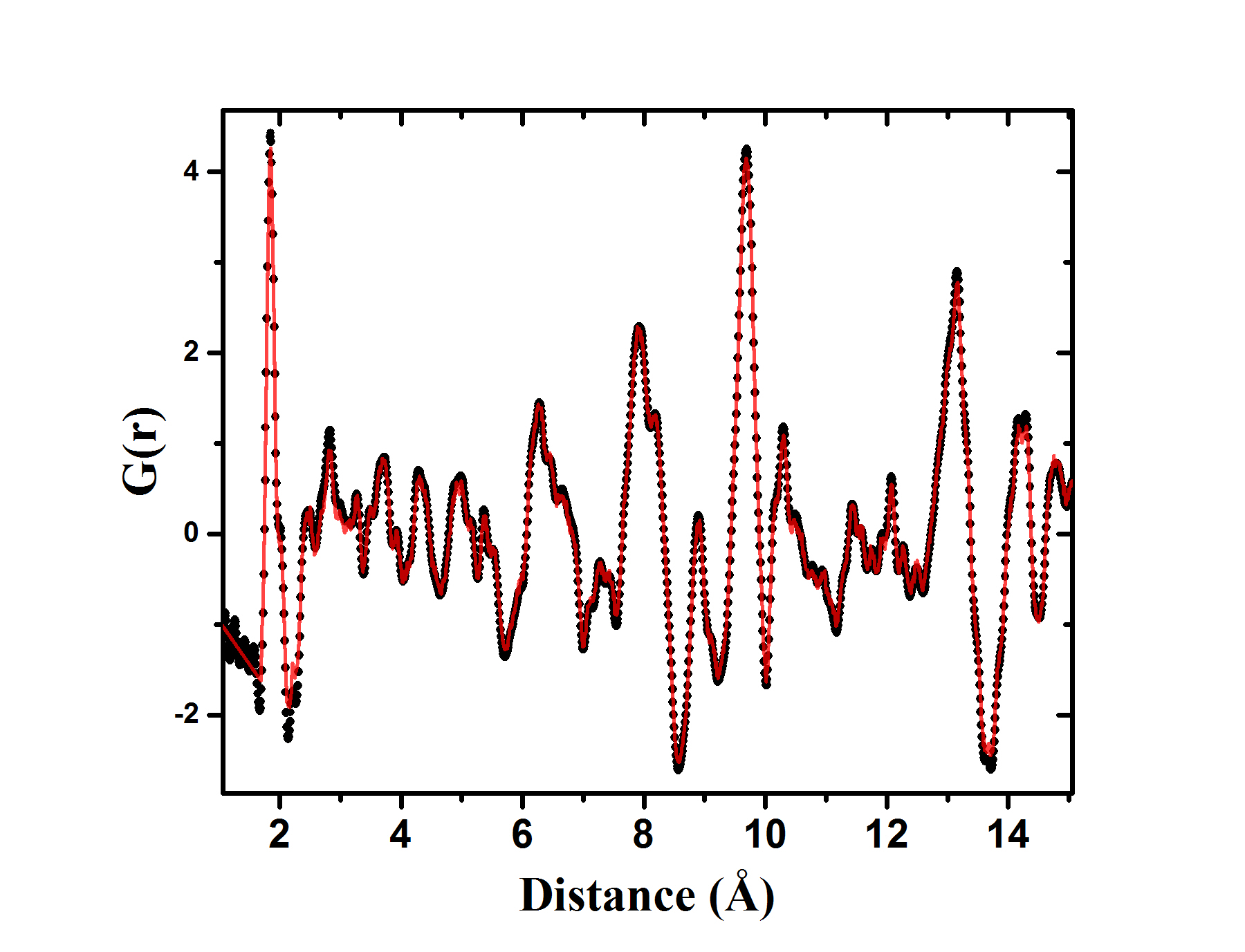|
NEUTRON
SCATTERING FROM LANGATATE |
| Home About Research |
This
work used neutrons to study the structure of langatate, particularly
the position of the oxygen atoms within the crystal, as a function of
temperature. Neutrons were required to resolve the oxygen
positions because the relative intensity of neutron scattering off of
oxygen is comparable to that of the other constituent elements (La, Ta,
Ga), unlike X-rays which scatter off of the heavy elements much more
intensely (X-ray scattering power scales with the number of electrons
in the atom). In addition to collecting standard
diffraction spectra with many Bragg peaks (see image bottom left), we
collected very high resolution data enabling us to measure the pair
distribution function (PDF) which tells us about the interatomic
distances for every pair of atoms (bottom right). Data were
collected at the two time-of-flight neutron sources in the United
States: the Spallation Neutron Source at Oak Ridge National Laboratory
(instrument: POWGEN) and the Los Alamos Neutron Science Center at Los Alamos National Laboratory (instrument: NPDF). Click on any image to enlarge:
|


